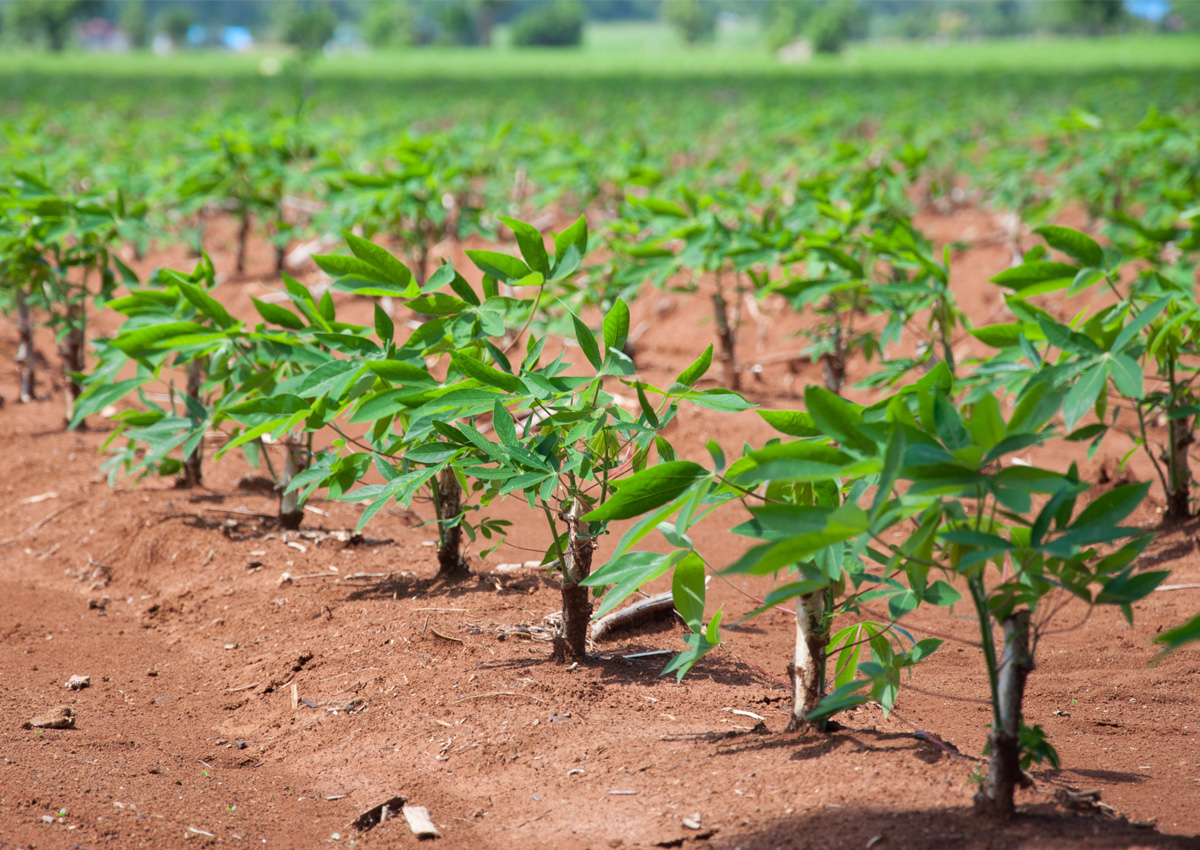
International Team First to Successfully Stack Virus Resistance Plus Iron and Zinc Biofortification in a Non-Cereal Crop
February 17, 2021| |
An international team of scientists has successfully developed cassava with high-level resistance to cassava mosaic disease (CMD), cassava brown streak disease (CBSD), as well as higher levels of iron and zinc. This is the first time that disease resistance and multiple biofortification traits have been stacked in this manner in a non-cereal crop.
The research builds on a 2019 research that showed increasing the mineral content of cassava storage roots was possible. It is led by Dr. Narayanan Narayanan, senior research scientist, and Dr. Nigel Taylor, associate member and Dorothy J. King Distinguished Investigator at the Donald Danforth Plant Science Center and their collaborators in Nigeria, led by Dr. Ihuoma Okwuonu of the National Root Crops Research Institute in Umudike and the US Department of Agriculture.
RNAi-mediated technology was used to achieve resistance to CBSD in two East African and two Nigerian farmer-preferred cultivars along with AtIRT1 (major iron transporter) and AtFER1 (ferritin) transgenes to achieve nutritionally significant levels of iron and zinc in cassava storage roots (145 and 40 µg/g dry weight, respectively).
The research team also tested the cassava to confirm that mineral levels are retained during food processing and cooking. They found that high levels of iron and zinc were retained through cooking and remained available for absorption in the gut following digestion. The biofortified cassava could provide 40-50 percent of Estimated Average Requirements (EAR) for iron and 60-70 percent of EAR for zinc for children and women in West Africa.
For more details, read the article on the Donald Danforth Plant Science Center website.
| |
You might also like:
- Research Reveals New Insights to Advance Cassava Breeding
- Kenyan Researchers Seek Approval to Introduce Disease-Resistant Cassava
- Farmers in North Western Uganda Upbeat about Disease Resistant GM Cassava
Biotech Updates is a weekly newsletter of ISAAA, a not-for-profit organization. It is distributed for free to over 22,000 subscribers worldwide to inform them about the key developments in biosciences, especially in biotechnology. Your support will help us in our mission to feed the world with knowledge. You can help by donating as little as $10.
-
See more articles:
-
News from Around the World
- GM Crops' Benefits to Fight Climate Change May Be Underestimated Than Previously Documented
- International Team First to Successfully Stack Virus Resistance Plus Iron and Zinc Biofortification in a Non-Cereal Crop
- Canadians Link Gene Editing with GMOs, New Website on Gene Editing Launched
- Carnegie Scientists Uncover Nutrient Sensing Capabilities of Plants as Answer to Climate Change
- Plant Experts Tag Team against Asian Soybean Rust
- Breakthrough Research Finds Genes to Boost Hybrid Wheat Breeding
- 15-year Data Show GM Rapeseed, Soybean Do Not Affect Biodiversity in Japan
- Swedish Researchers Develop Biosensors to Boost Agri Production amidst Climate Change
- Research Identifies Best Gene to Provide Potatoes Resistance Against Late Blight
- Researchers Solve Riddle of Plant Immune System
-
Research Highlights
- Smelly Parasitic Plant Lost About Half Its Genes, Stole Some from Hosts
-
Plant
- PH S&T Department Poised to Develop NBT Guidelines
-
Read the latest: - Biotech Updates (December 17, 2025)
- Gene Editing Supplement (December 17, 2025)
- Gene Drive Supplement (February 22, 2023)
-
Subscribe to BU: - Share
- Tweet

